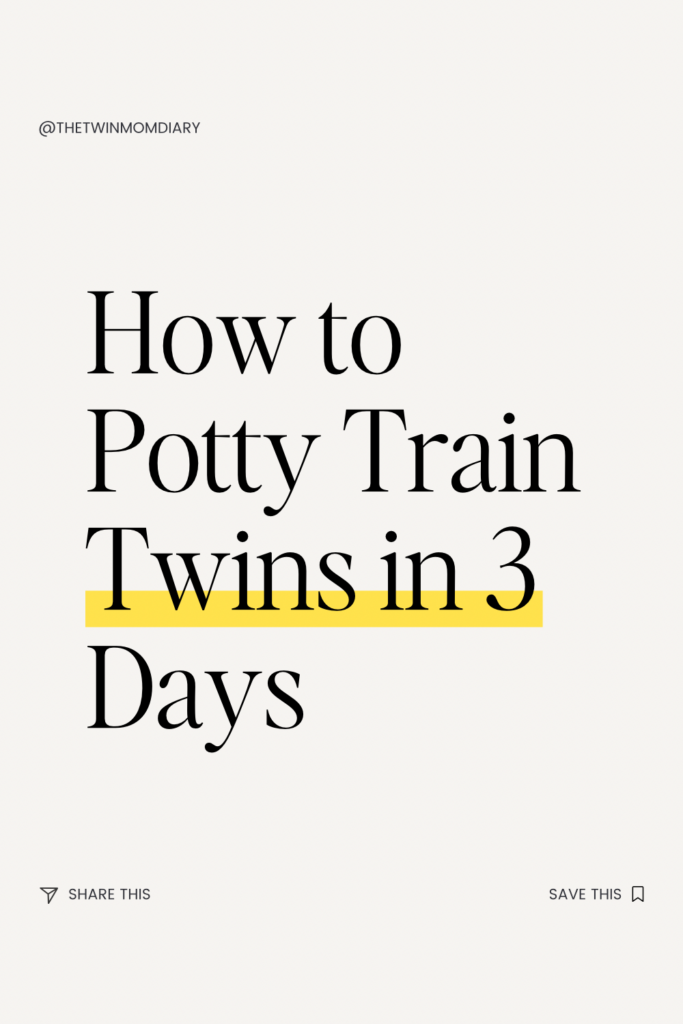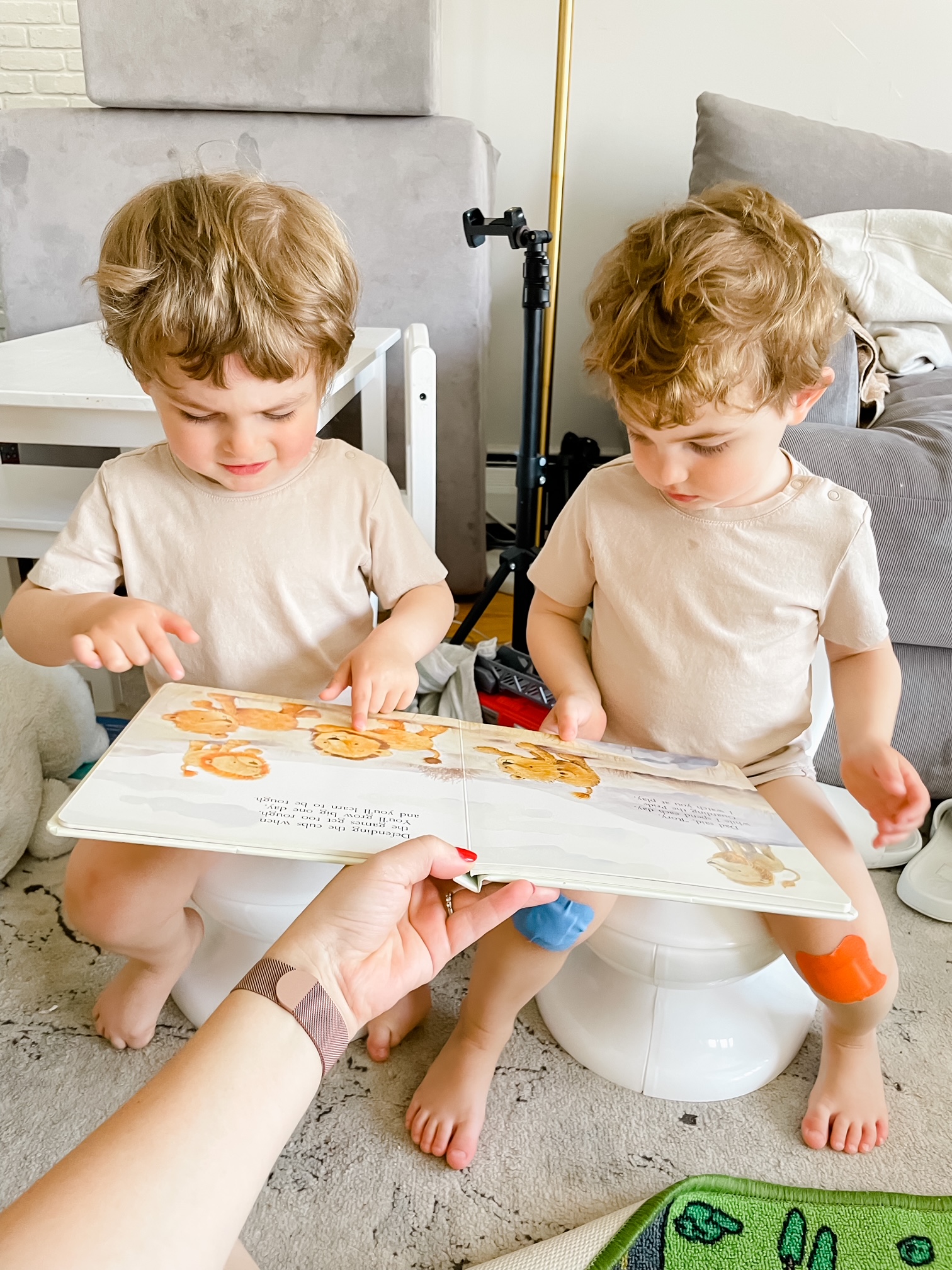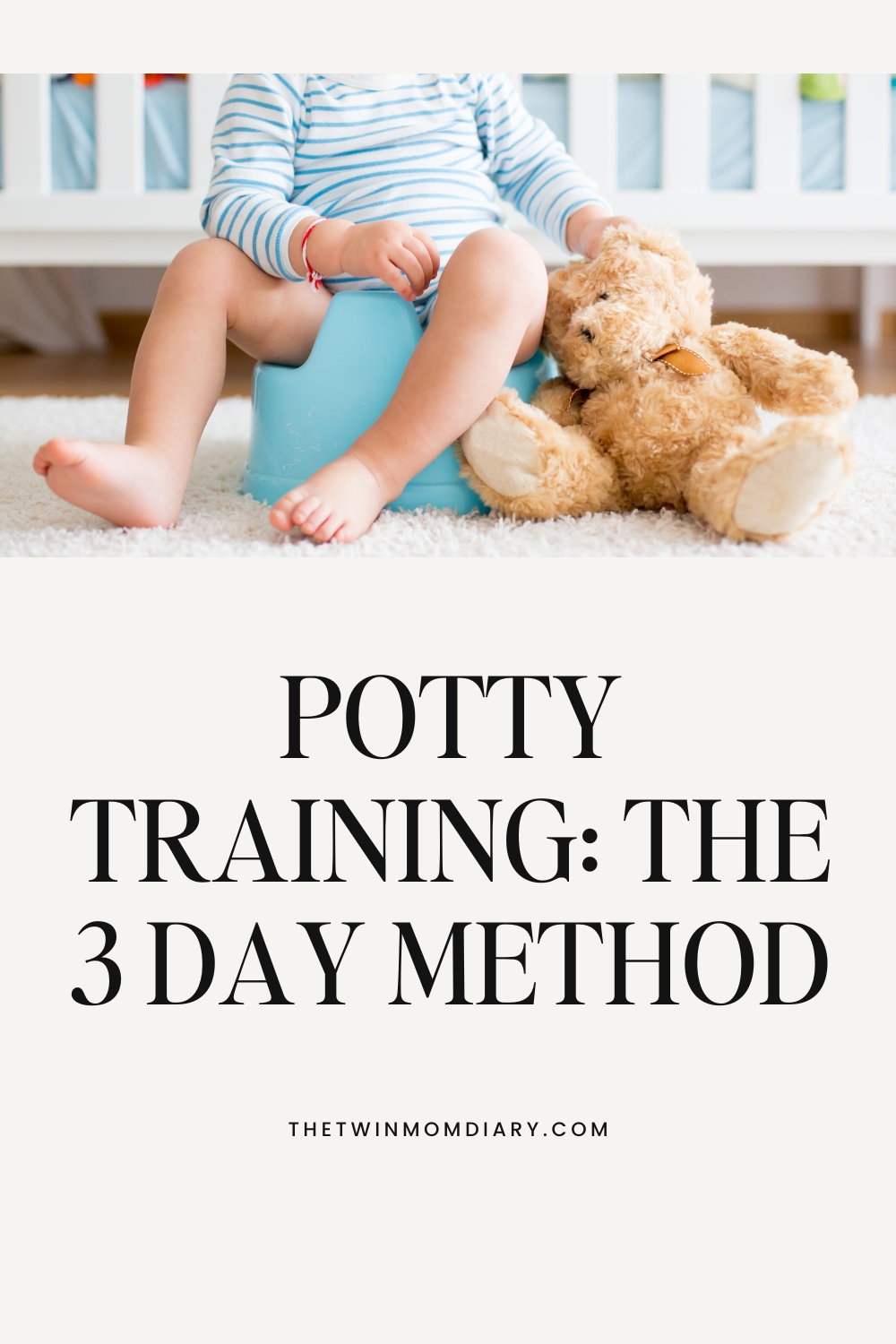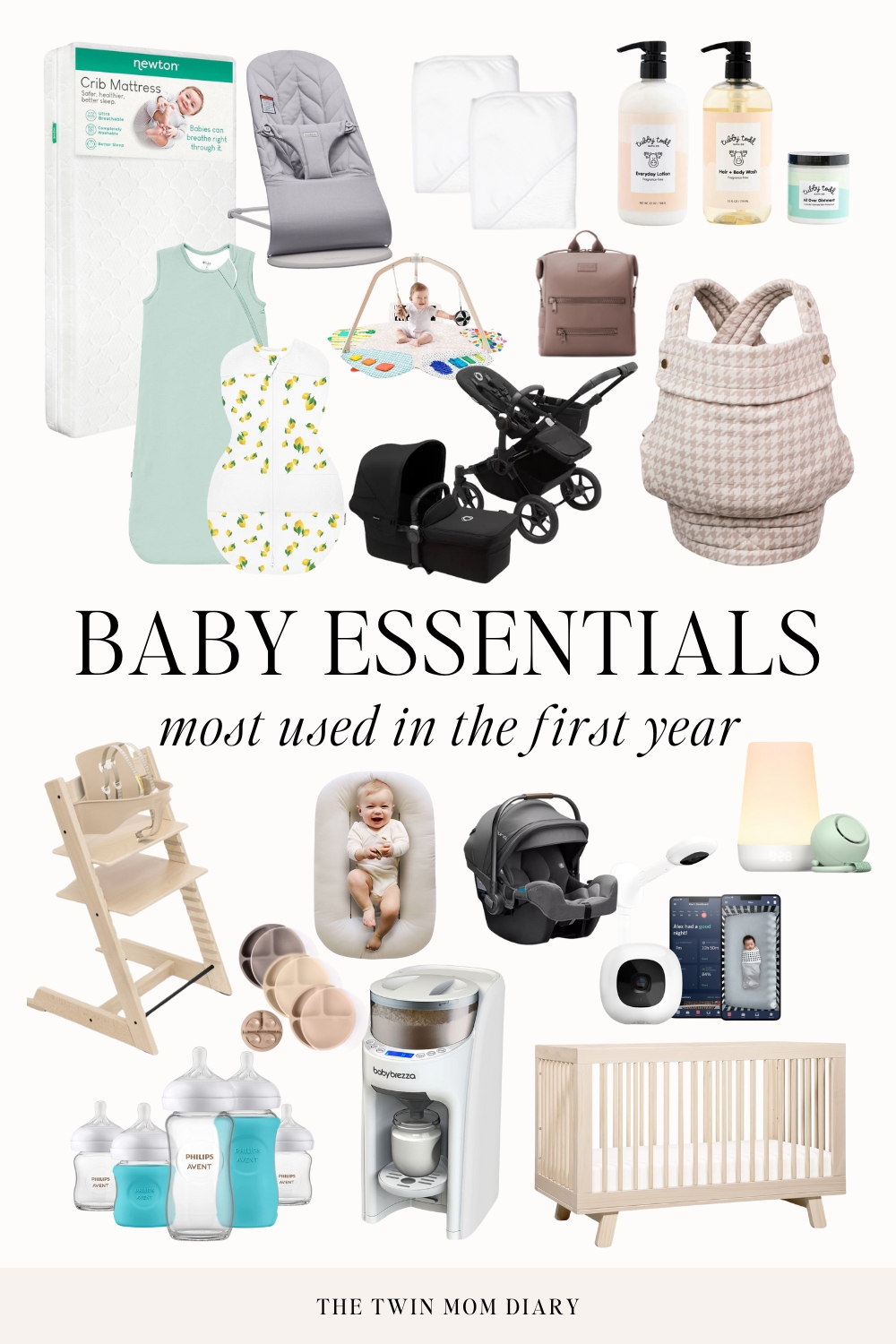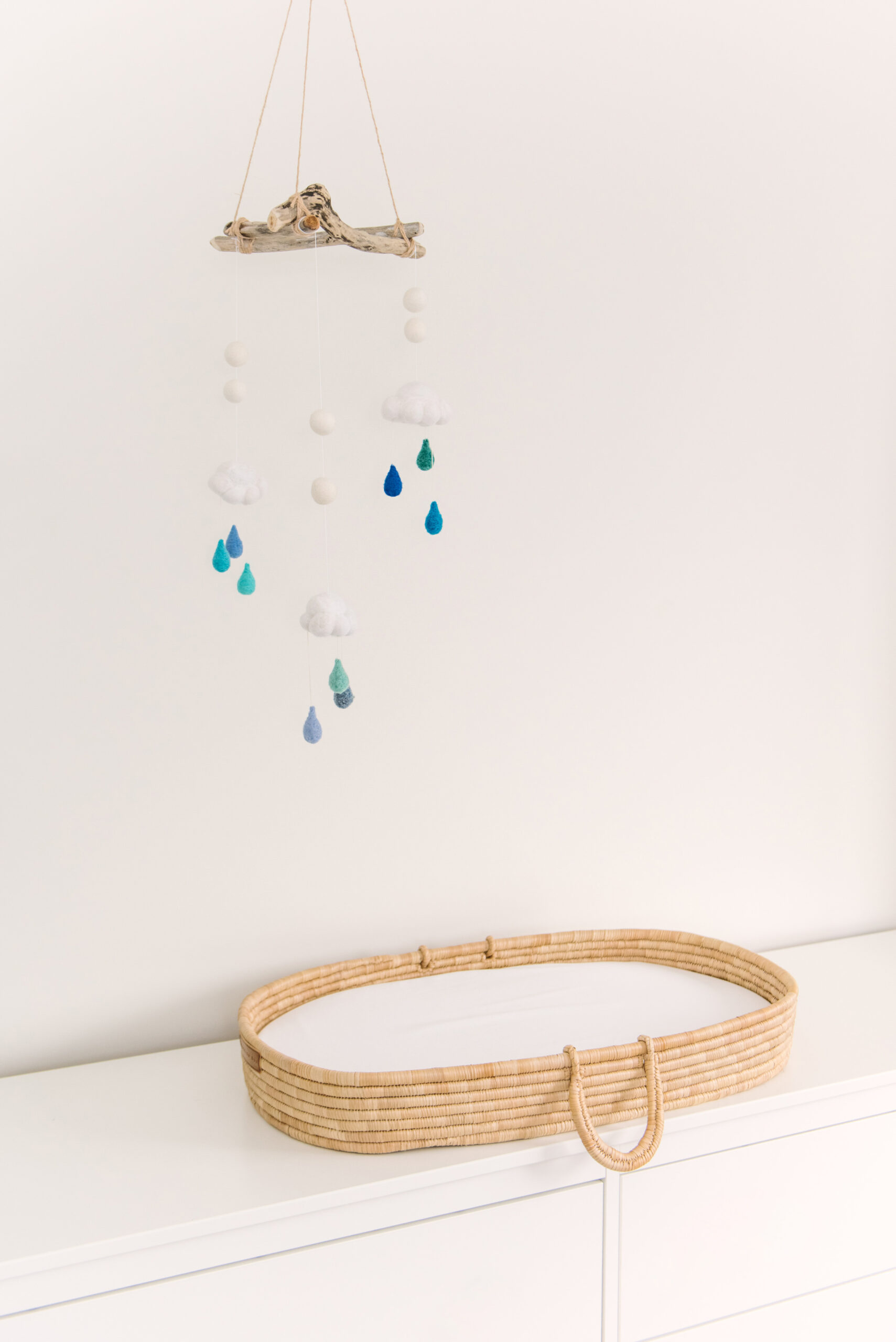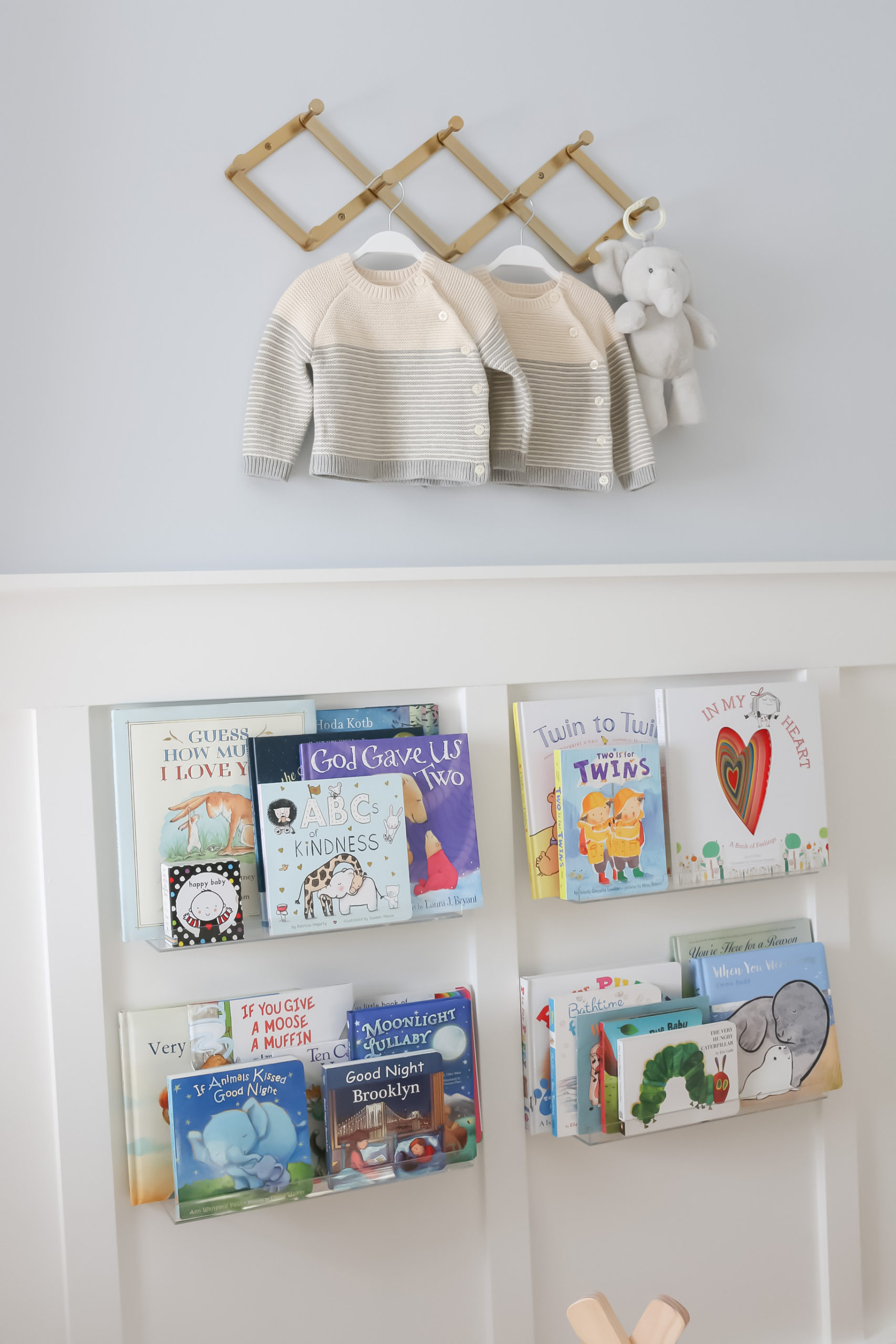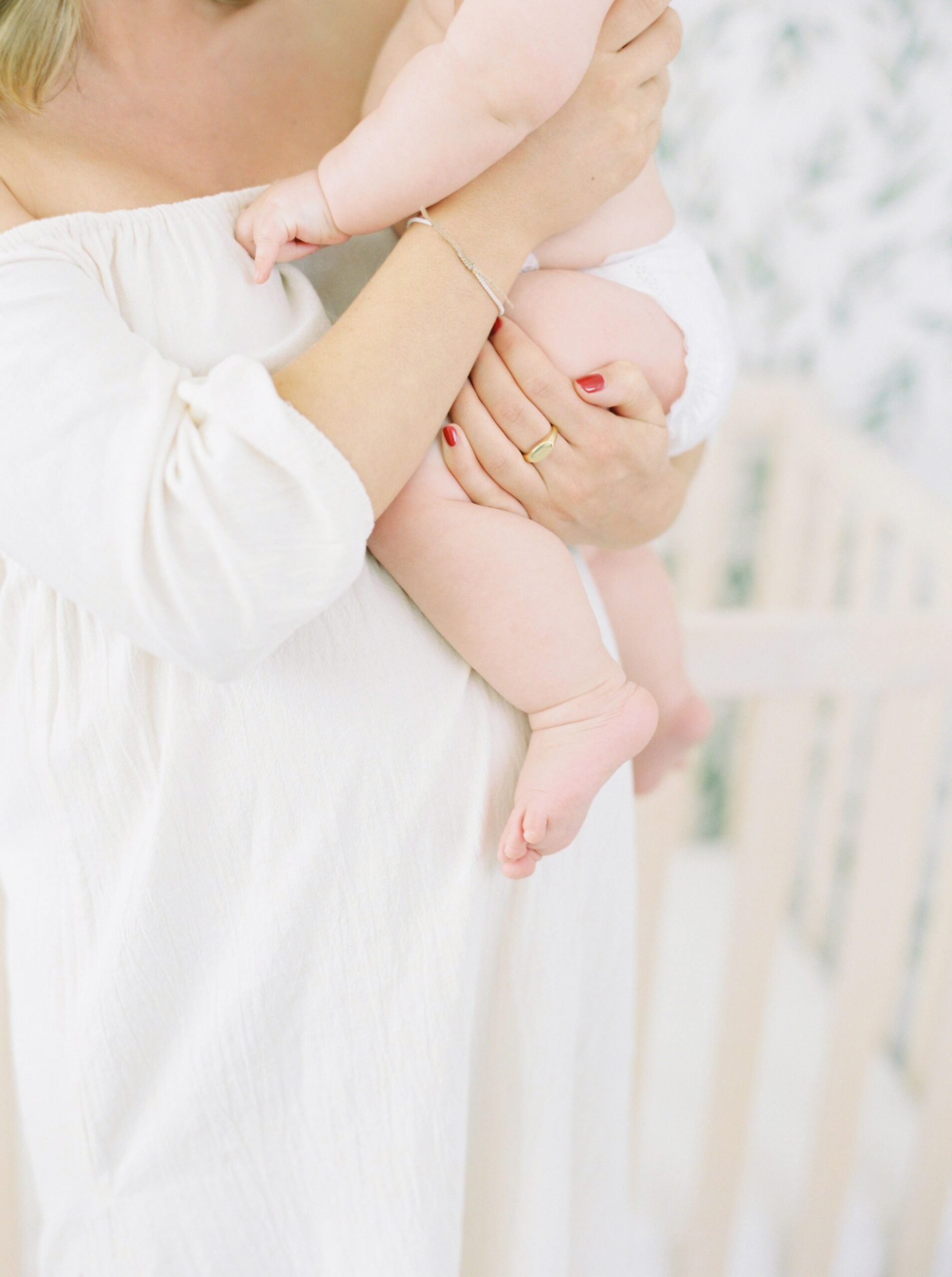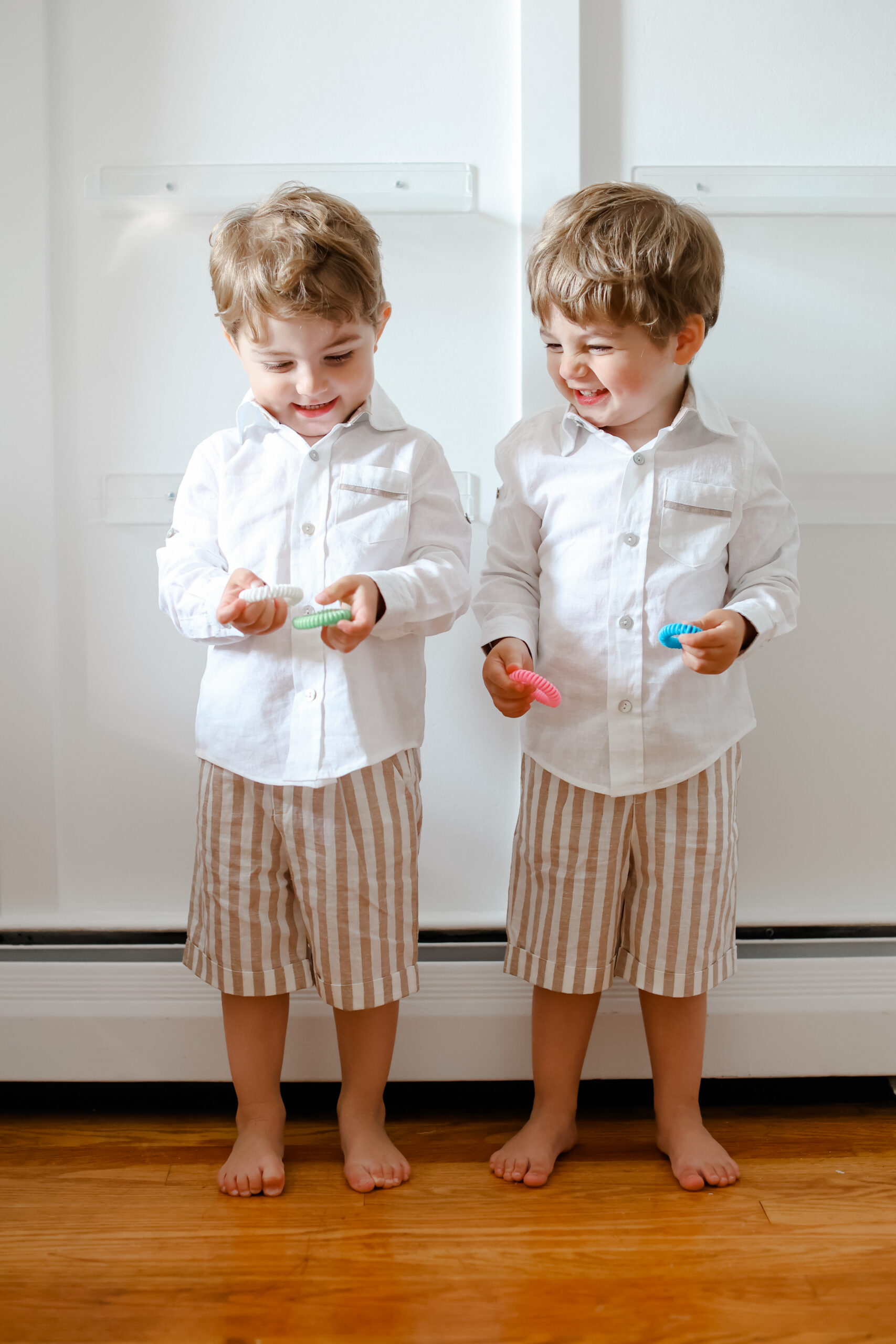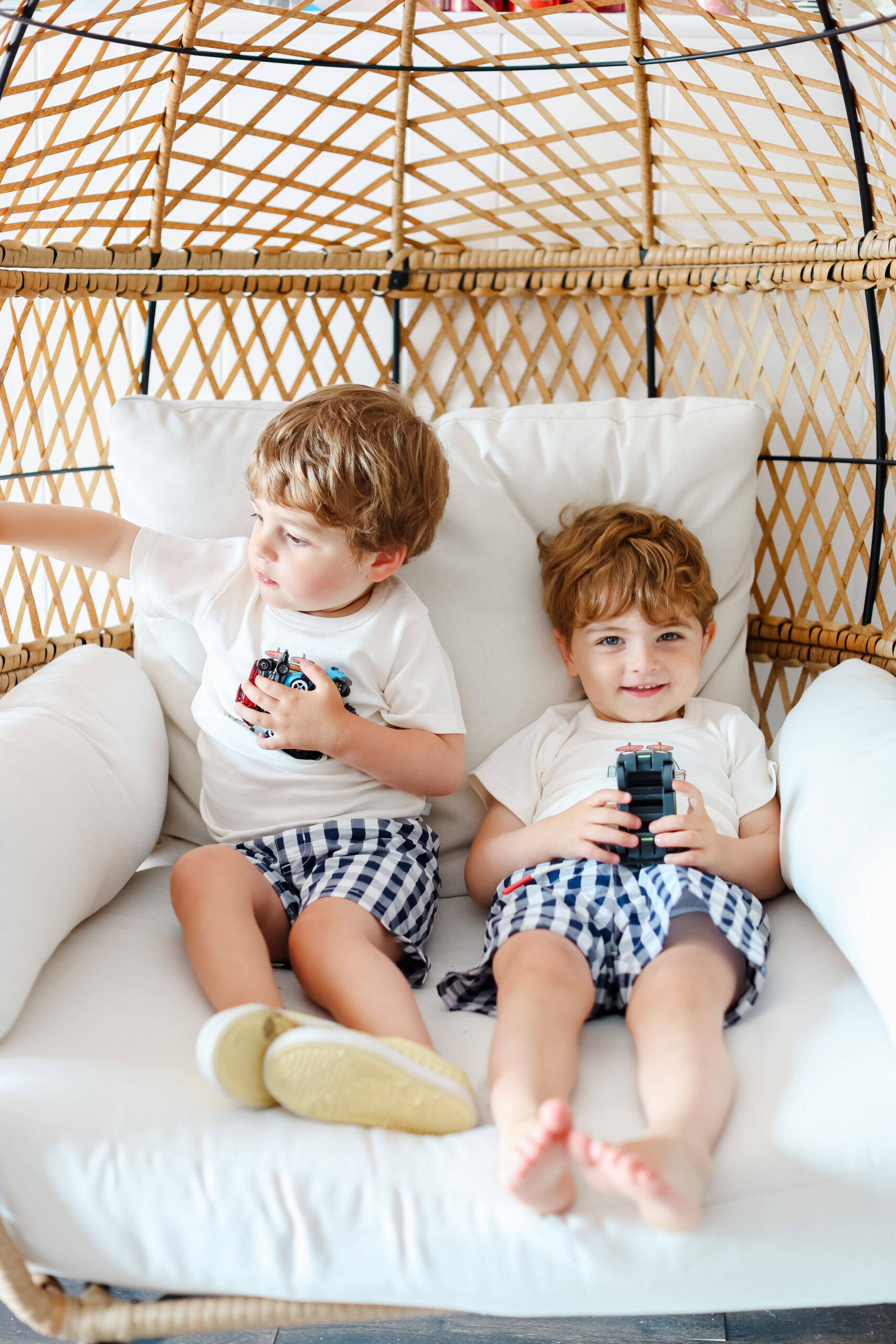Want to know all there is to know about potty training twins? This ultimate guide for potty training twins is tested and approved and is everything you need to know.
Potty training twins can be a daunting task for any parent and if you are anything like me, you are doing all the research you possibly can to make sure this process goes as smoothly as possible. As a twin mom myself, I am giving you the top potty training tips that my family and I swear by.
You are going to learn all about readiness signs, how to make it enjoyable, potty training method, tips for success, potty training essentials, and more.
After learning about potty training twins, you are going to be a pro and extra prepared when potty training your children.
This post is the ultimate guide to potty training twins and everything every parent should know about.
Readiness Signs: How to Tell When Your Twins / Child is Ready to Begin Potty Training
When it comes to potty training, the key is to start early – the earlier you start, the better your chance of success. Based on the book I read and the method I used, the recommended time frame is anywhere between 20-30 months. There are certain signs you can look out for to determine if your child is ready:
- If your child shows an interest in the toilet, starts to recognize the sensation of needing to go, and can communicate the need to use the restroom, then they are probably ready to begin potty training.
- Your child is capable of following directions, can take off and put on clothing, can stay dry for more than a couple of hours
- Know (most) of their ABCs
- Aware of when they have gone to the bathroom, then it’s likely they are ready to start!
I started potty training the twins at 24. We used the 3-day potty training method and it has been about 3 weeks since we started and they have been doing AMAZING! We have an accident here and there but not too many!
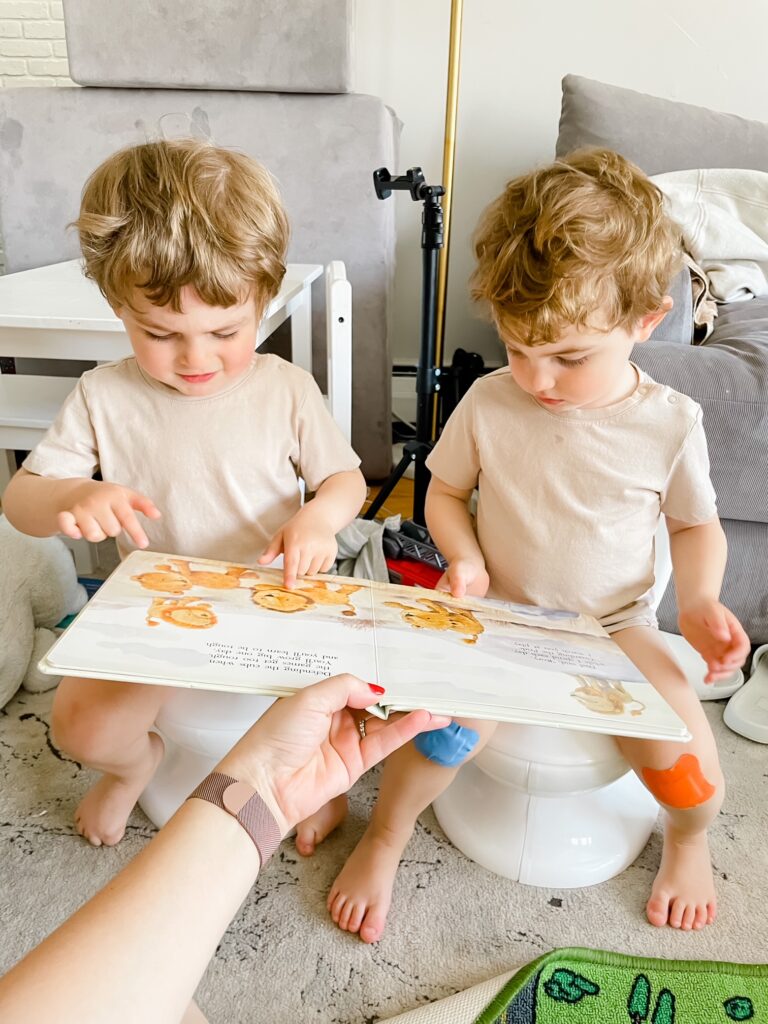
Keep it Positive: How To Make Potty Training an Enjoyable Experience
No matter how much preparation, research, and planning is done, potty training can still be a daunting task for both parents and toddlers. However, it doesn’t have to be a negative experience. By focusing on making potty training an enjoyable and positive experience, parents can help their toddlers learn to use the toilet while building their confidence.
Start the experience by helping your toddler become familiar with the potty. Explain to them why we use the toilet and how it works. Show them pictures of other toddlers using the toilet and explain in detail how it’s done. My recommendation would be to not bring out their small potty until the day you begin so they do not start playing with it. We want them to know it’s not a toy.
Practice with your toddler, and make it fun. Use stickers and charts (feel free to save the one I have below) to not only track progress but also to motivate your toddler and make it a game. Provide praise and rewards for achievement and make sure to use lots of positive reinforcement.
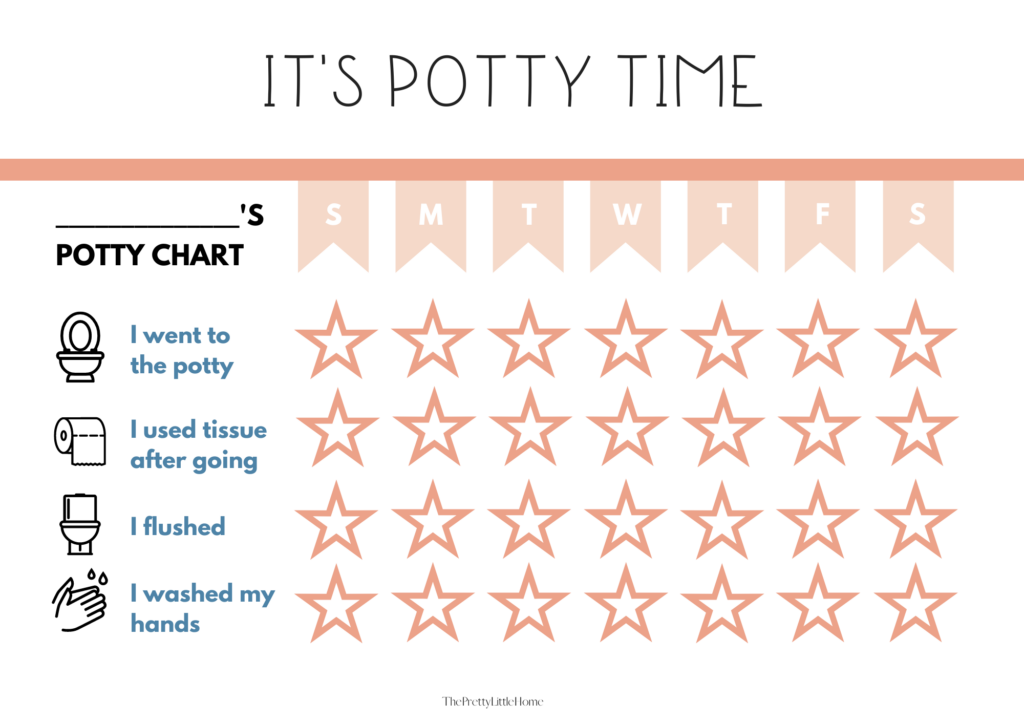
By focusing on making potty training an enjoyable and positive experience, parents can create a successful transition for their toddler. With the right attitude and approach, it can be a fun experience that both adults and toddlers can look forward to.
Potty Training Method: Oh Crap! Potty Training (3 Day Potty Training)
For parents looking for a modern, relaxed potty training method, the “Oh Crap! Potty Training” book is a great option. This method helps parents learn to recognize the signs that their toddler is ready to take the potty training leap, as well as tips on dealing with the inevitable bumps along the way. It encourages parents to take a step back and trust their toddler’s natural process while providing gentle guidance and support.
This was the method we used which is essentially the 3-day potty training. Below are the blocks you will work through:
- Oh Crap Potty Training Block 1: Mark on your calendar 3 days you will stay at home with your kids. Your toddler will be completely naked these 3 days while peeing and pooping. Anytime they go even if it’s midway, you will bring them to the potty. In summary, you watch your kid as a hawk these 3 days
- Oh Crap Potty Training Block 2: Add Pants/clothes but no underwear. The looser the clothing the better.
- Oh Crap Potty Training Block 3: Add small outings to test their new skills! Can be a walk around the block, a quick trip to the store! Still commando at this point.
- Oh Crap Potty Training Block 4: Add underwear! Peeing and pooping while fully clothed. We are about on week 3 of potty training and have not incorporated underwear yet but we plan to soon somewhere between 1-2 months.
- Oh Crap Potty Training Block 5: Peeing and pooping on their own, without reminders.
- Oh Crap Potty Training Block 6: Nap and nighttime training.
Potty Training Tips and Techniques
When first starting the process of potty training, it is important to consult your child’s pediatrician or primary care physician to ensure they are developmentally ready. It is important to choose a time when you can be dedicated to it, as potty training can be a bit of a process. Giving your child positive reinforcement and rewards when they do use the bathroom is important.
Additionally, being consistent and setting a routine is also helpful. It may be a good idea to use a potty chair that is easy to move for your child to be able to take it with them to the bathroom if need be. Finally, pick out a few pairs of clothes that are easy to remove and put on. This can help teach your child more independence and give them a sense of control.
Potty Training: The Essentials
Below are my potty training essentials!
- Oh Crap Potty Training Book: this was the method we used and this book was extremely helpful.
- Training Potty: we got two of these potties for the twins and they still use them to this day. They now use both the big toilet and this potty. This is an absolute must-have when starting to potty train.
- Travel Potty: this is one of my favorite purchases for potty training. This comes with us everywhere. It is extremely convenient especially if we go to a place where public restrooms are unavailable. I use these bags with it.
- Toilet Seat Cover: once they get a hang of going to the potty in their little one, I like to use this for the big potty!
And of course lots of cleaning supplies and a few glasses of wine!
Tips to Keep Training on Track: What Works and What Doesn’t
When it comes to keeping training on track, creating a detailed plan that is actionable and measurable is key. To do this, break the plan into manageable chunks that can be completed in a reasonable amount of time. Additionally, ensure that the objectives are clear to the team and that everyone knows exactly what’s expected of them.
It’s also helpful to check in with the team throughout the training process. This can be done through weekly check-ins or by sending out surveys to get feedback and gauge progress.
Finally, make sure to set rewards and recognition for successful completion of tasks and objectives. This way, everyone is incentivized to stay on track and remain motivated. By following these tips, you can create an effective and successful training program.
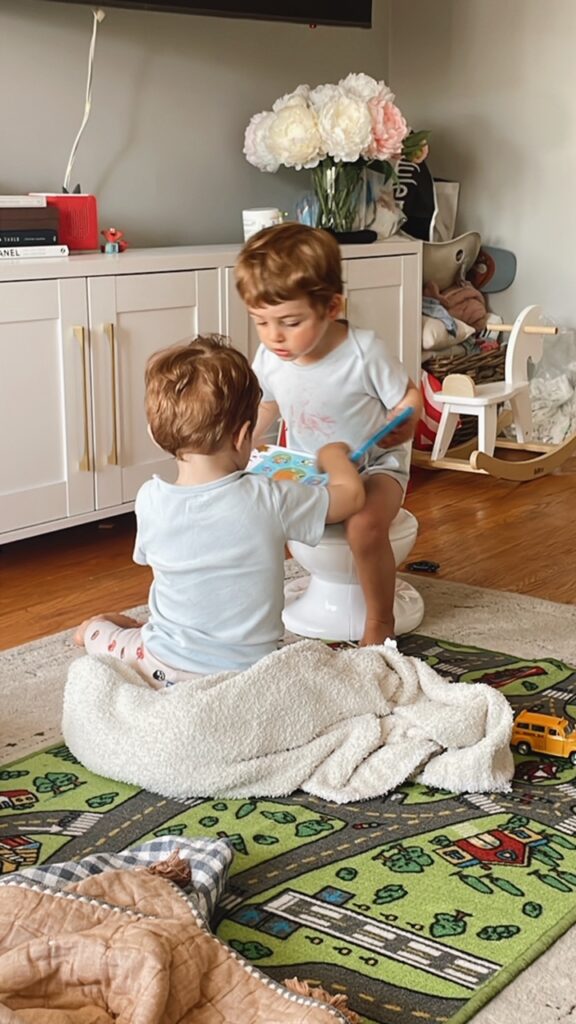
Allowing Flexibility in Potty Training: When to Be Firm and When to Be Gentle
A key component of potty training is maintaining a balance of firmness and gentleness. If you’re too firm in your approach, it can lead to an unpleasant experience for your child and ultimately, an unsuccessful experience. On the other hand, if you’re too gentle, it can be hard to motivate your child to learn a new skill and stay consistent in their potty training. It is important to be aware of this balance and adjust your approach accordingly.
When potty training starts to become challenging, it is often helpful to take a step back, be understanding, and provide your child with positive reinforcement. When your child has a positive experience, they will be more likely to stay engaged and take initiative in their potty training. Patience in this process is key and DON’T PUT TOO MUCH PRESSURE! Trust me, that will only make things worse.
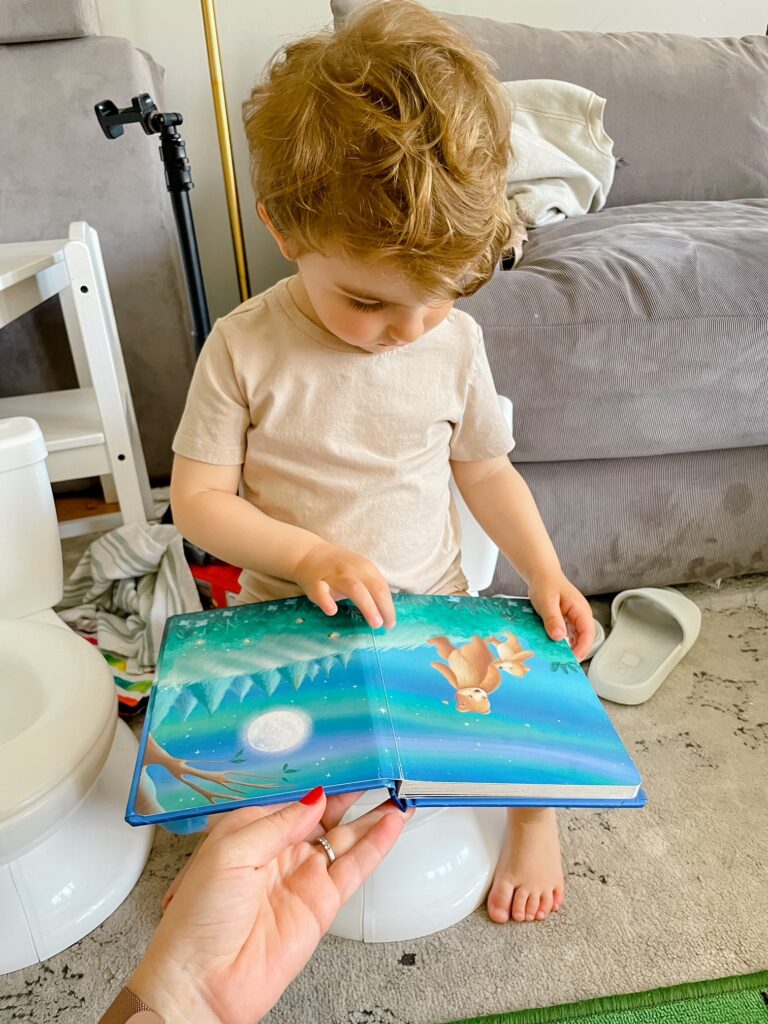
Scripts and Rewards: How to Motivate Your Twins
Potty training twins can be a challenge, but this is an important milestone. Personally, I wasn’t too big on rewards. I praised them when they did go on the potty and said things like “Good Job! You went pee pee on the potty!” to show them what they did was good!
When they missed the potty, I would say something like “Pee does not go on the floor / in your pants. Pee goes in the potty. When you feel like you need to go Pee-Pee, go sit on your potty, it’s right over here”.
Since we still use diapers for nap time and nights, I say to them: “It’s time to go to sleep, mommy will put your sleep underwear on now (what I call a diaper now). When you wake up, mommy will take night underwear off and we will go sit on the potty”.
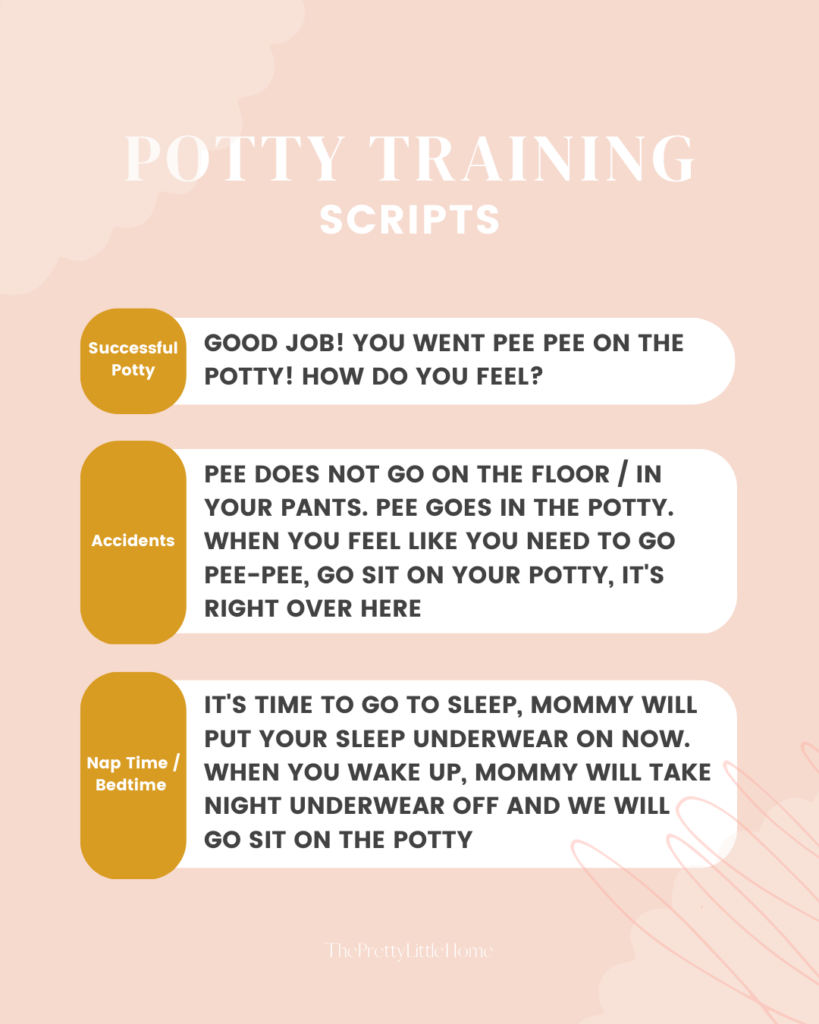
Potty Training Troubleshooting: Quick Fixes to Common Problems
If you’re in the potty training trenches and struggling to make progress, don’t worry! I have been in your shoes and still am. We still have occasional accidents and that is normal!
Here are some tips to help you keep calm and move forward:
- First, be sure to stay consistent. Start and end the day with a bathroom visit and maintain a consistent routine in between.
- Second, know that accidents are going to happen – and that’s okay. Instead of getting angry, help your child practice wiping and cleaning up.
- Third, give positive reinforcement. Praise your child and provide rewards (if you choose) when they use the potty.
- Finally, try not to get overwhelmed. If your experience isn’t going as expected, take a few steps back, take a deep breath, and stay focused. With the right approach, you and your little one will be diaper-free in no time!
Final Thoughts
Potty training twins doesn’t have to be an overwhelming or stressful experience. With the right mindset and approach, it can be a smooth and enjoyable milestone for everyone involved. Set realistic expectations, create positive reinforcement, and be flexible in the process. And you’ll soon be able to celebrate your twin’s success!
Have you ever potty-trained twins before? Do you have any tips to share? Share your stories and tips with us in the comments!
Posts you may like:
Typical Day with 24 Month Old Twins: Routine & Schedule
Baby Products: Top 8 Twin Mama Useful Must-Haves
Liked this Post? PIN IT!
